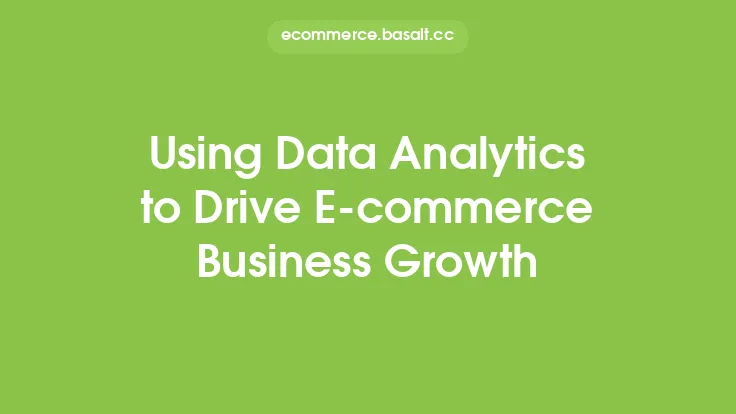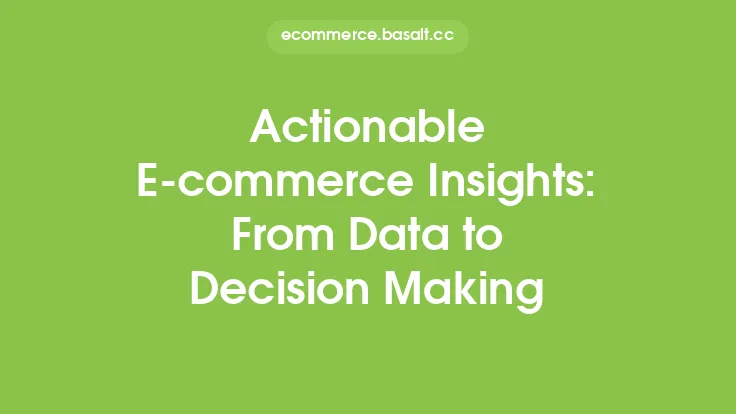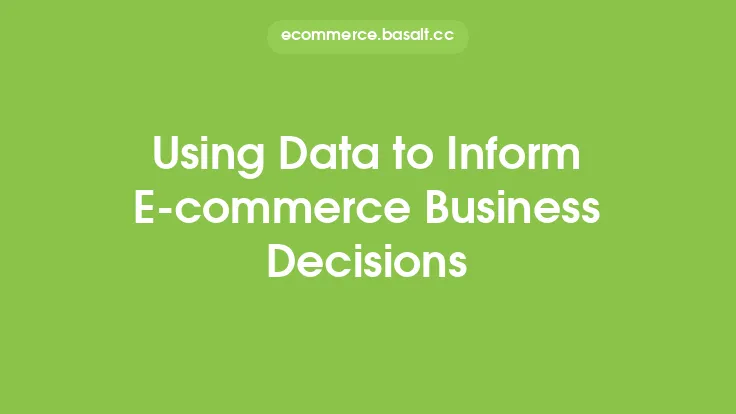The world of e-commerce is becoming increasingly complex, with a vast amount of data being generated every day. This data can be a powerful tool for businesses, providing insights into customer behavior, sales trends, and market dynamics. However, making sense of this data can be a daunting task, especially for those without a background in data analysis. This is where data visualization comes in – a powerful technique that can help e-commerce businesses to extract valuable insights from their data and make informed decisions.
Introduction to Data Visualization
Data visualization is the process of using graphical representations to communicate information and insights from data. It involves using charts, graphs, maps, and other visual elements to display data in a way that is easy to understand and interpret. In the context of e-commerce, data visualization can be used to analyze customer behavior, track sales trends, and identify areas for improvement. By using data visualization, e-commerce businesses can gain a deeper understanding of their customers and the market, and make data-driven decisions to drive growth and profitability.
Benefits of Data Visualization in E-commerce
There are several benefits of using data visualization in e-commerce. Firstly, it allows businesses to quickly and easily identify trends and patterns in their data. This can help them to spot opportunities and challenges, and make informed decisions about their marketing and sales strategies. Secondly, data visualization can help businesses to communicate complex data insights to non-technical stakeholders, such as executives and investors. This can be particularly useful for e-commerce businesses that need to present data-driven insights to external parties. Finally, data visualization can help businesses to identify areas for improvement, such as optimizing their website design or streamlining their supply chain.
Types of Data Visualization in E-commerce
There are several types of data visualization that can be used in e-commerce, including:
- Bar charts: used to compare categorical data, such as sales by product category or customer demographics.
- Line charts: used to show trends over time, such as sales by month or customer engagement by quarter.
- Scatter plots: used to show the relationship between two variables, such as customer age and purchase amount.
- Heat maps: used to show the distribution of data, such as website traffic by page or customer behavior by time of day.
- Geographic maps: used to show the distribution of customers or sales by geographic location.
Best Practices for Data Visualization in E-commerce
To get the most out of data visualization in e-commerce, there are several best practices to follow. Firstly, keep it simple: avoid using complex charts or graphs that may be difficult to understand. Secondly, use color effectively: use color to draw attention to important trends or insights, but avoid using too many colors that may be distracting. Thirdly, label axes and charts: make sure that all charts and graphs are clearly labeled, so that stakeholders can quickly understand the data. Finally, tell a story: use data visualization to tell a story about the data, rather than just presenting a series of charts and graphs.
Tools and Technologies for Data Visualization in E-commerce
There are several tools and technologies that can be used for data visualization in e-commerce, including:
- Tableau: a popular data visualization platform that allows users to connect to a variety of data sources and create interactive dashboards.
- Power BI: a business analytics service by Microsoft that allows users to create interactive visualizations and business intelligence reports.
- D3.js: a JavaScript library for producing dynamic, interactive data visualizations in web browsers.
- Google Data Studio: a free tool that allows users to create interactive, web-based data visualizations.
Common Challenges and Limitations
While data visualization can be a powerful tool for e-commerce businesses, there are several common challenges and limitations to be aware of. Firstly, data quality: poor data quality can lead to inaccurate or misleading insights, so it's essential to ensure that data is accurate and up-to-date. Secondly, data overload: too much data can be overwhelming, so it's essential to focus on the most important metrics and insights. Thirdly, lack of skills: data visualization requires specialized skills and knowledge, so it's essential to invest in training and development for staff. Finally, cost: some data visualization tools and technologies can be expensive, so it's essential to carefully evaluate the costs and benefits before investing.
Future of Data Visualization in E-commerce
The future of data visualization in e-commerce is exciting and rapidly evolving. With the increasing use of artificial intelligence and machine learning, data visualization is becoming more automated and sophisticated. Additionally, the use of virtual and augmented reality is becoming more prevalent, allowing for more immersive and interactive data visualizations. As e-commerce businesses continue to generate more data, the need for effective data visualization will only continue to grow, making it an essential tool for businesses that want to stay ahead of the competition.





